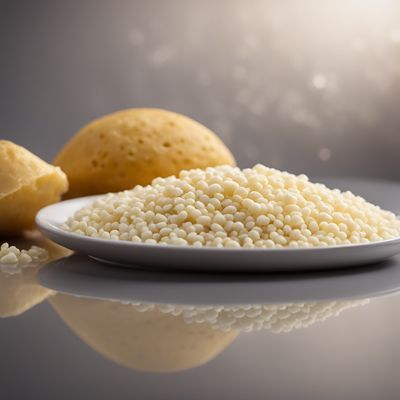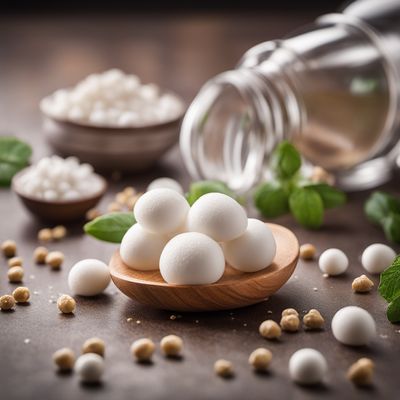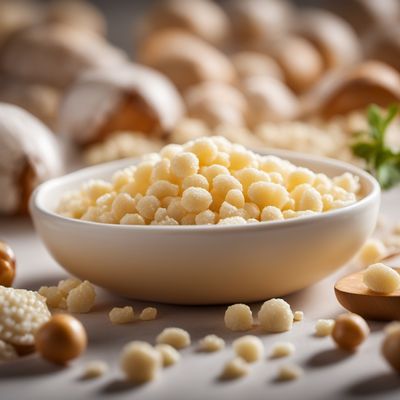
Ingredient
Maltitol
The Sweet Secret: Maltitol
Maltitol is a sugar alcohol that resembles the taste and texture of sugar, but with fewer calories. It has a sweet flavor and a similar appearance to granulated sugar. Maltitol is often used as a sugar substitute in various food products, including baked goods, candies, and beverages. It provides sweetness without causing a significant increase in blood sugar levels, making it suitable for individuals with diabetes or those following a low-carb diet. However, excessive consumption of maltitol may have a laxative effect.
Origins and history
Maltitol was first discovered in the 1960s and is derived from maltose, a sugar found in grains like barley. It is commonly produced by hydrogenating maltose, resulting in a sugar alcohol with a sweet taste. Maltitol is widely used in the food industry as a sugar substitute due to its low-calorie content and ability to mimic the taste and texture of sugar. It is particularly popular in sugar-free and low-calorie products, providing a sweet flavor without the added calories.
Nutritional information
Maltitol is a low-calorie sweetener that contains approximately 2.1 calories per gram, compared to 4 calories per gram in regular sugar. It is also lower on the glycemic index, meaning it has a smaller impact on blood sugar levels. However, it is important to note that maltitol can still affect blood sugar levels, especially when consumed in large quantities.
Allergens
Maltitol may cause digestive issues, such as bloating, gas, and diarrhea, when consumed in excessive amounts. Individuals with irritable bowel syndrome (IBS) or a sensitivity to sugar alcohols should exercise caution when consuming products containing maltitol.
How to select
When selecting maltitol, look for products that clearly state the presence of maltitol as a sweetener. Check the ingredient list for terms like 'maltitol,' 'maltitol syrup,' or 'hydrogenated starch hydrolysates.' Additionally, consider the brand reputation and choose products from reputable manufacturers to ensure quality and safety.
Storage recommendations
To maintain the freshness and quality of maltitol, store it in a cool, dry place away from direct sunlight. Keep it tightly sealed in its original packaging or transfer it to an airtight container to prevent moisture absorption. Proper storage will help prevent clumping and maintain the sweetener's texture and taste.
How to produce
Maltitol is typically produced on an industrial scale and is not commonly grown or produced by individuals at home. It requires specialized equipment and processes to produce maltitol in large quantities.
Preparation tips
Maltitol can be used as a substitute for sugar in a variety of recipes, including baked goods, beverages, and desserts. However, it is important to note that maltitol is not as sweet as sugar, so adjustments may be needed to achieve the desired level of sweetness. Other sugar substitutes, such as stevia, erythritol, or xylitol, can also be used as alternatives to maltitol.
Substitutions
Maltitol is commonly used in sugar-free candies, chocolates, baked goods, and beverages. It provides sweetness and helps to achieve a similar texture to products made with sugar. Maltitol is also used in diabetic-friendly or low-carb products, allowing individuals with dietary restrictions to enjoy sweet treats without the added sugar.
Culinary uses
Maltitol is widely available in grocery stores, supermarkets, and online retailers. It can be found in the baking aisle or in the section dedicated to sugar substitutes. Additionally, it is commonly used in various food products labeled as 'sugar-free,' 'low-sugar,' or 'diabetic-friendly.'
More ingredients from this category

Lactitol
"The Sweet Secret: Exploring the Versatility of Lactitol"

Isomalt
The Sweet Secret: Isomalt

Sorbitol
Sweetener with a Twist

Other polyols
The Sweet Side of Sugar Substitutes: Exploring Other Polyols

Erythritol
Natural Sugar Substitute

Xylitol
The Sweet Tooth's Ally

Mannitol
The Sweet Alcoholic Sugar